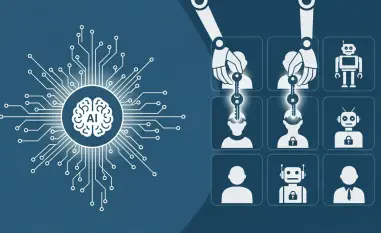Today, we’re thrilled to sit down with Malik Haidar, a renowned cybersecurity expert with a deep background in protecting multinational corporations from evolving threats. With his extensive experience in analytics, intelligence, and security, Malik brings a unique perspective on how consumer tech trends, like the explosive growth of smart homes, intersect with enterprise IT challenges. In this conversation, we explore the expanding attack surface due to remote work, the lessons enterprises can learn from consumer IoT, and the critical role of AI in shaping both home and corporate environments.
How has the rapid rise of smart homes influenced enterprise security risks in recent years?
The growth of smart homes, with over 139 million households in Europe and North America adopting these technologies, has significantly broadened the enterprise attack surface. When employees work remotely and connect corporate devices to home Wi-Fi networks surrounded by IoT devices, it creates vulnerabilities. Many of these consumer devices lack robust security—think default passwords or outdated firmware—and they become potential entry points for attackers targeting corporate data. It’s no longer just about securing an office; it’s about securing every individual home as if it’s a branch of the company.
What specific dangers do you see when corporate devices are linked to home networks with multiple IoT gadgets?
The biggest danger is the lack of control over the home environment. A smart thermostat or camera might seem harmless, but if it’s compromised, it can serve as a gateway to the entire network, including corporate laptops or VPNs. These devices often communicate unencrypted or store sensitive data, like behavioral patterns, that hackers can exploit. For enterprises, this means a single weak link in an employee’s home can unravel even the most sophisticated corporate defenses.
What do you think is driving the widespread adoption of smart home technologies among households?
It really comes down to tangible benefits. People are drawn to smart homes for enhanced safety—like security systems that alert them to intruders—along with cost and time savings from energy-efficient devices or automated routines. These are real, everyday advantages that make the investment worthwhile for families. Unlike earlier tech fads driven by novelty, this growth is rooted in practical value, which is why it’s resonating so strongly across millions of homes.
How do these consumer priorities around smart homes compare to what enterprises consider when adopting new technologies?
There’s a surprising overlap. Just as households want clear benefits, enterprises—especially CIOs and CFOs—demand a solid return on investment before greenlighting new tech like AI or IoT solutions. Both groups are looking for efficiency, risk reduction, and measurable outcomes. The difference lies in scale and complexity; enterprises need solutions that integrate across sprawling systems and comply with strict regulations, whereas consumers prioritize simplicity and immediate impact.
Do you think enterprise leaders apply a similar focus on tangible value when approving technologies like AI or IoT for their organizations?
Absolutely. In the corporate world, every tech investment has to justify itself. A CFO won’t sign off on a million-dollar AI rollout unless there’s hard evidence it’ll cut costs, boost productivity, or mitigate risks. It’s very similar to how consumers approach smart home purchases—there has to be a clear “why.” The challenge for enterprise leaders is quantifying that value upfront, especially with emerging tech where the payoff might not be immediate.
Can you share an example of how a clear return on investment has driven enterprise adoption of these kinds of technologies?
Sure, take predictive maintenance systems powered by IoT and AI. A manufacturing company might deploy sensors on factory equipment to predict failures before they happen. The upfront cost is significant, but the ROI comes from avoiding downtime, which can cost millions per hour. That direct link to savings or risk avoidance mirrors how a homeowner might invest in a smart thermostat to cut energy bills—it’s all about connecting the tech to a concrete benefit.
How does the concept of a ‘branch of one’ in remote work environments change the way security leaders approach their strategies?
The ‘branch of one’ idea flips traditional security on its head. Each remote employee essentially becomes their own micro-office, with unique risks based on their home setup. CISOs can’t rely on centralized controls like they would in a corporate building. Instead, they have to push security to the endpoint—laptops, phones, and even personal networks. It’s about decentralizing protection while maintaining strict oversight, which often means adopting zero-trust architectures where no device or network is inherently trusted.
Why is it so important to assume that home networks are always compromised, and what can enterprises do about it?
Assuming compromise is critical because home networks are rarely as secure as corporate ones. They’re often shared with multiple users and devices, increasing the odds of a breach. If a hacker gets into a home network through a vulnerable IoT device, they could pivot to corporate assets. Enterprises can counter this by enforcing strong endpoint security—think multi-factor authentication and encrypted connections—and providing employees with secure, company-managed routers or VPNs to isolate corporate traffic from personal networks.
What lessons can enterprise leaders, like CTOs, draw from the smart home market as a testing ground for AI and data governance?
The smart home space is like a high-speed lab for tech innovation. It shows what scales and what doesn’t. For instance, consumer IoT has refined user-friendly interfaces and data collection at a massive scale—think exabytes of behavioral data. CTOs can learn how to balance usability with privacy, a huge concern in enterprise settings. It also highlights the importance of interoperable systems; smart homes work because devices talk to each other, and enterprises need that same seamless integration for their own smart environments.
How can insights from consumer IoT help enterprises build their own ‘smart’ workplaces or operational systems?
Consumer IoT offers a blueprint for creating adaptive, data-driven environments. For example, smart homes use real-time data to optimize energy or security—enterprises can apply similar principles to manage office spaces or supply chains. The key insight is prioritizing user experience; if employees find enterprise systems as intuitive as their home setups, adoption rates soar. Plus, the security challenges in consumer IoT, like patching vulnerabilities, can inform enterprise strategies for managing sprawling device ecosystems.
What role do you see AI playing in transforming smart home systems, and how might this shape enterprise expectations in the future?
AI is taking smart homes from basic automation to predictive, adaptive systems. Instead of just turning lights off when you leave, these systems anticipate needs based on patterns—like adjusting heating before you get home. This raises the bar for enterprises. Employees accustomed to seamless, AI-driven experiences at home will expect the same from workplace tech. It’s pushing companies to modernize digital tools, ensuring they’re intuitive and proactive, or risk frustrating their workforce.
What is your forecast for the intersection of smart home growth and enterprise security over the next few years?
I think we’re heading toward a tighter convergence between consumer and enterprise tech ecosystems. As smart homes continue to proliferate, the lines between personal and corporate security will blur even further, forcing enterprises to adopt more granular, user-centric security models. AI will be central, driving both smarter home systems and enterprise defenses, but it’ll also amplify risks if not governed properly. My forecast is that we’ll see a wave of hybrid solutions—tools that secure both home and work environments—along with stricter regulations to manage the data deluge from IoT. It’s going to be a challenging but exciting space to watch.













